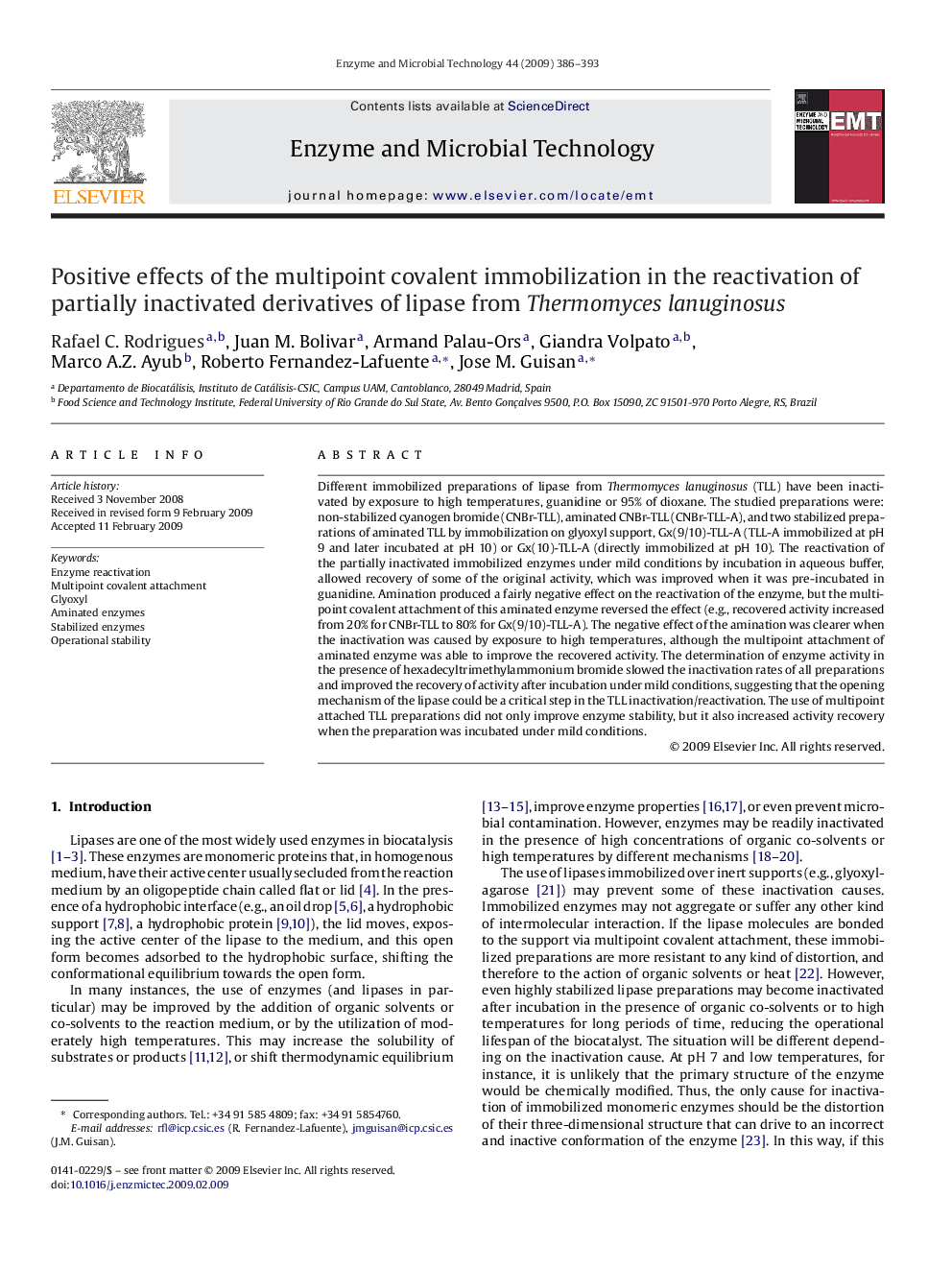| Article ID | Journal | Published Year | Pages | File Type |
|---|---|---|---|---|
| 17767 | Enzyme and Microbial Technology | 2009 | 8 Pages |
Different immobilized preparations of lipase from Thermomyces lanuginosus (TLL) have been inactivated by exposure to high temperatures, guanidine or 95% of dioxane. The studied preparations were: non-stabilized cyanogen bromide (CNBr-TLL), aminated CNBr-TLL (CNBr-TLL-A), and two stabilized preparations of aminated TLL by immobilization on glyoxyl support, Gx(9/10)-TLL-A (TLL-A immobilized at pH 9 and later incubated at pH 10) or Gx(10)-TLL-A (directly immobilized at pH 10). The reactivation of the partially inactivated immobilized enzymes under mild conditions by incubation in aqueous buffer, allowed recovery of some of the original activity, which was improved when it was pre-incubated in guanidine. Amination produced a fairly negative effect on the reactivation of the enzyme, but the multipoint covalent attachment of this aminated enzyme reversed the effect (e.g., recovered activity increased from 20% for CNBr-TLL to 80% for Gx(9/10)-TLL-A). The negative effect of the amination was clearer when the inactivation was caused by exposure to high temperatures, although the multipoint attachment of aminated enzyme was able to improve the recovered activity. The determination of enzyme activity in the presence of hexadecyltrimethylammonium bromide slowed the inactivation rates of all preparations and improved the recovery of activity after incubation under mild conditions, suggesting that the opening mechanism of the lipase could be a critical step in the TLL inactivation/reactivation. The use of multipoint attached TLL preparations did not only improve enzyme stability, but it also increased activity recovery when the preparation was incubated under mild conditions.
